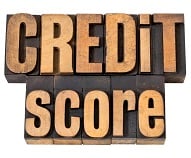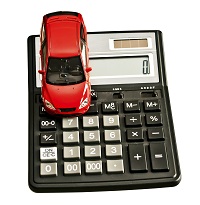 The company that wrote the book on credit scoring is located just south of CrossCheck, in Marin County, California. It is called Fair Isaac and Company, and the score they generate is called a “FICO” score, an abbreviation of the company name. To state the obvious, this score affects whether you get credit or not, and how high your interest rate will be.
The company that wrote the book on credit scoring is located just south of CrossCheck, in Marin County, California. It is called Fair Isaac and Company, and the score they generate is called a “FICO” score, an abbreviation of the company name. To state the obvious, this score affects whether you get credit or not, and how high your interest rate will be.
What is Subprime?
A score of less than 660 is called subprime. About 27% of the population falls in this category. People can have a subprime score for a number of reasons. Some might be perceived as true credit risks: people who have filed for bankruptcy or who have gone through foreclosure, or who have had a car repossessed before. But most of them are not bad risks and they are certainly not “bad people;” usually they just endured a “life event” such as serious illness, loss of a job, caring for a family member or some other catastrophic event that has temporarily impacted their disposable income.
Subprime loans are now over a quarter of all car loans, and over half of all used car loans now go to subprime borrowers. There is even a new category, called “deep subprime,” for consumers with a FICO score below 600, and these loans constitute about 10% of all car loans! Multiply these percentages by a new car market of 15 million vehicles, and a used car market that is probably three times that, and you can see that these are big numbers – in the tens of millions.
Subprime and the Down Payment
When a subprime borrower applies for a car loan, they usually have to make a down payment. Without the down payment, the dealer would have to resort to a non-prime lender who might charge the consumer a much higher rate and would probably charge the dealer as much as $500 on the transaction, too.
 Dealers want to help their sub-prime customers get a down payment for a better loan. This amount is typically one to two thousand dollars. The bigger the down payment, the lower the rate the consumer pays for their loan.
Dealers want to help their sub-prime customers get a down payment for a better loan. This amount is typically one to two thousand dollars. The bigger the down payment, the lower the rate the consumer pays for their loan.
There is a misconception that consumers can just make this down payment with a credit card. This is rarely true.
To start, a recent Gallup poll shows that fully a third of all consumers don’t have a credit card in the first place. Of those that do have a card about 15% have already utilized 80% of their credit line, which means that they have little or no window to buy on their card and cannot use it for a down payment. That comes to roughly another 20% who are not able to use their credit card for the down payment, on top of the 33% that don’t have a card. And even those who could finance their down payment on a credit card may not want to. The average debt per card with a balance is $8220, meaning that servicing current credit card debt is a big expense for many families.
Stay tuned for Part 2 on subprime, including pitfalls and how to improve sales …


